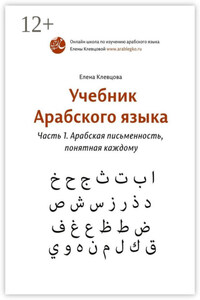Language is what makes us human. One of the main differences between humans and other mammals is articulate speech. Of course, animals also have their own language, but only humans, thanks to their intelligence, have articulate speech and a huge variety of languages. In animals, communication consists only of basic needs. In humans, arbitrary sounds and signs form specific words that can be learned, invented, and endlessly combined within grammatical structures. The ability to remember and present various information is one of the key skills that a person possesses. It allows us to express our thoughts, feelings and ideas to others. Much knowledge, traditional values, historical facts and much more have been preserved to this day only through languages. Language allows us to learn from each other, share knowledge and information, and build relationships. It is an essential component of culture and society and substantial to personal and professional success. In addition, it is impossible not to mention that in the modern world, where there an international community exists and the world is open for tourism, it is very important to be able to communicate with speakers of other languages. Without the ability to speak a foreign language, traveling becomes complicated due to the inability to ask for help. In addition, without knowing the language, it is impossible to fully experience the culture and history of the country, and it also deprives of the opportunity to talk with residents of other countries, who can greatly expand horizons of knowledge. In addition, as long as there is a need in our society to communicate with foreigners, foreign languages will not lose its relevance. It is possible to endlessly list the reasons why it is worth learning foreign languages, because language is the key that can unlock many doors on the path of life, as well as the opportunity to get to know a world filled with such different cultures, places and people.
Some researchers believe that the first linguistic features were precise vocal control and learning. The idea of a musical proto-language originated with Darwin and has been modified several times over the years by various researchers. Another view suggests that the protolanguage began with gestures or pantomime. In this case, syntax and social communication presumably preceded vocal proficiency. To support the gestural hypothesis, researchers cite the fact that our closest evolutionary relatives show excellent skills in this area. They have about 70 controlled and variable gestures and about 4 types of calls. But in this case, it is unclear how the language became speech, because gestures should have dominated this development. It is worth noting that all these forms of development are combined into successive stages. Perhaps 2 or 4 million years ago, Australopithecines were singers, and around 1.9 million years ago, they began using gestures and vocalizations. Moreover, hierarchical syntax arose only about 200—300 thousand years ago.
The endlessly ongoing struggle between languages is similar to the process of evolution. A word, like a gene, will travel around the world according to its utility. Although the public often resists the entry of new words into their language, this process is irreversible and harmonious. The main achievement for the language is to become a lingua franca, a world language. Since the end of the 20th century, this status can be safely given to English, because it is international. In airports, train stations, on labels, on television – almost anywhere in the world you can find English. There are approximately 375 million native speakers and more than 1 billion second-language speakers. That means one in six can speak the English language. English is in almost every industry, whether its education, science, technology, business, media, medicine, etc. and of course English requires some effort to learn.
There are many various methods of teaching any language. The history of methods of teaching foreign languages knows numerous and diverse attempts to find the most rational method of teaching foreign languages. The natural method, pursuing purely practical goals of teaching, first of all, the ability to speak and read easy text, has long satisfied the needs of a society in which productive knowledge of a foreign language was the privilege of its upper strata. With the emergence of schools and the introduction of a foreign language as a general education subject, at first they also tried to teach the language using natural methods, but it was soon replaced by the translation method, which reigned supreme until the middle of the 19th century. Over the next 100 years, there was a constant struggle between supporters of natural, subsequently direct, and translation methods, and although modern methods of teaching foreign languages are in many ways different, the question of using the native language when teaching a foreign language or abandoning it is still of great importance.








